If you want screaming success with your fiddle leaf fig, read on my friend! This guide is sure to give you all the info you need to see your indoor fiddle leaf fig THRIVE!
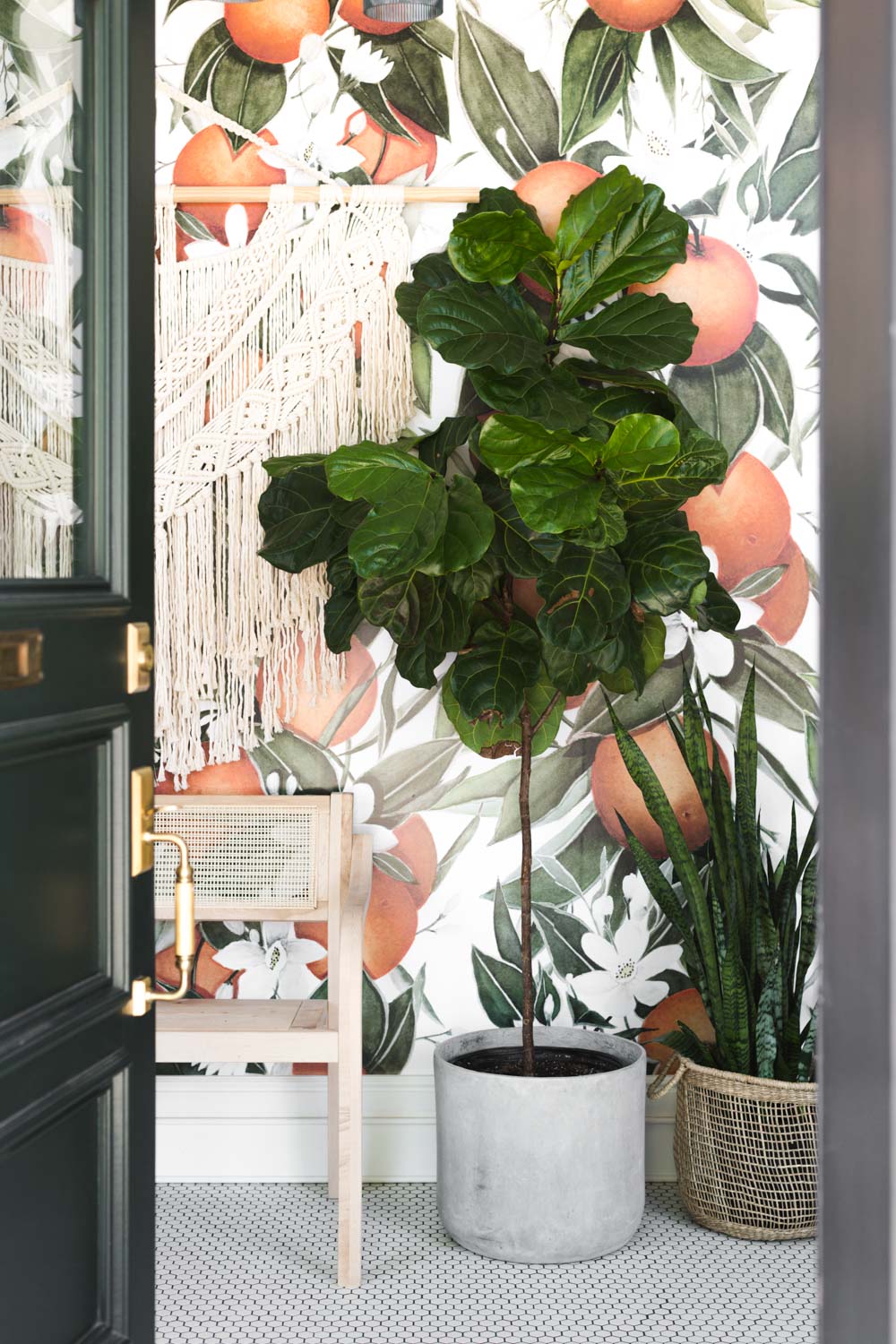
Here’s What You’ll Learn in this Post:
- Fiddle Leaf Figs LOVE bright indirect light. The more the better!.
- Deeply water your fig tree when the top 1/4 of soil is dry.
- Fiddle Leaf Figs are prone to root rot, so a proper watering technique is crucial
- Browning leaves can mean a number of things, diagnose yours with the pictures in this post!
- Control the size of the fiddle leaf fig with pruning.
- The best fertilizer for lush giant leaves
If you are new to the game and this post convinces you that you can in fact keep a fiddle alive, I’ve got some great shopping tips at the end!
Getting to Know the Fiddle Leaf Fig
Speak The Lingo
This plant is most commonly referred to by its common name, the Fiddle Leaf Fig. It’s technical name is Ficus lyrata, so sometimes it’s grouped into the ficus category. People also shorten it to Fiddle, or Fiddle Leaf, but don’t simply call it a fig, or do-and risk looking like an amateur.
Temperament: Treenager
Fiddle Leaf Figs fit into a category I like to call a Treenager. They can be awesome and happy and fill a room with joy, but they can also throw a fit when the slightest breeze that they don’t want touches them.
Approach their care the way you would a teenager and everything will be juuuuust fine. With the right know-how, you can easily keep a fiddle leaf fig thriving in your home.
Anatomy of a Fiddle Leaf Fig
Fiddle Leaf Fig Care
Watering Your Fiddle Leaf Fig Plant
How often should I water?
Because fiddles are so prone to root rot how you water is almost more important than anything else. Constantly wet roots are not your friend. This means that a little bit of water every day is a big fat NO! Check your soil with these tips and you’ll be absolutely perfect!
Checking your soil
Check your soil for moisture by sticking your finger 2 inches into the dirt. There are also tools like a moisture meter that you can buy that will tell you moisture levels, but I love using my hands.
If the dirt feels wet, it’s way too soon, come back in a few days.
If the soil dry at the top and a little moist below, give it a day and check it again.
If it’s dry, then it’s time to water!
How much water should I use?
Fiddles love to be watered deeply, meaning you are putting enough water into the dirt that it runs out the bottom of the planter (this is why good drainage is so important!!)
This is how you should be watering it every time. The amount of time between waterings is entirely dependent on how the plant is consuming it, the season, the light conditions, and the size of the planter. Just make sure the top 2 inches are dry before you water again!
When the water starts coming out of the drainage holes, you’ve likely got enough-unless your soil is too dry- keep reading for that situation!) Let the water sit in the pan for about 15 minutes so that the soil can reabsorb some of it and then after 15 or so minutes, clean up the rest. (I use a towel to absorb the extra!)
Regularly checking the soil to see how it’s doing is key, you’ll do great!!
Tip- Stay alert for soil shrinkage!!
If your plant is too dried out the soil will shrink in and pull away from the edge of your planter. (See image below!) This isn’t good because when you water, the water will just drain down the gaping sides and out of the holes in your planter without ever getting to the root ball.
I keep a chopstick handy and poke it a few times into the soil to break things up, add oxygen, and make sure that the water reaches the center of my plant.
Tip – Group other houseplants near your fiddle leaf fig to encourage more humidity!
Sunlight For Your Fiddle Leaf Fig Plant
The fiddle leaf fig loves the sun! Kind of… Mostly.
She’s a fair skinned mama who lives at the beach. Even though she goes often, she doesn’t tan very well so she wears 50 spf and a long sleeved swim shirt! Find a spot in your home that gives the FLF a plethora of indirect sunlight.
If she is getting too much direct sun, she’ll sunburn. Turn the plant every 2-3 months as it starts to grow towards the light. This will help the leaves to grow evenly around the entire plant. (Read the troubleshooting guide at the end of this post to see what sunburn looks like!)
Need more info about the lighting conditions in your house? Read this post!
Soil For Your Fiddle Leaf Fig Plant
Garden soil is too heavy for most house plants. Look for an indoor potting mix. It has all the yummy stuff the indoor fiddle leaf fig needs to grow big and strong. Some growers recommend a peaty soil. But really any general indoor potting mix is going to work great. The most important thing to remember is the drainage. A soggy water logged soil will cause root rot!
Tip: Mix your indoor potting soil with ⅓ cactus soil. Cactus soil is rockier than most potting soils and it’s help with your water drainage.
Aside from the potting soil, you can give your FLF a boost of confidence (especially during the growing season) with the right fertilizers and plant foods. I recommend Plant Food, it’s THE BEST fertilizer for every single one of your houseplants.
Potting Your Fiddle Fig Leaf Houseplant
Size
Like all houseplants, your FLF needs the right size pot! A pot that’s too small will crowd the root system and the plant will starve. But a pot that’s too big is the perfect environment for root rot. The sweet spot (usually what you bought the FLF in) is a pot that’s 1/3 wider than the plant’s root ball.
When should I repot?!
As a plant that doesn’t handle stress well, I recommend leaving your fiddle in the grow pot (the planter you purchased it in) for at least a few months while it acclimates to your home. It’s typically a good fit for the first year. After a year, the root system will likely be in need of a larger home. Find a pot made out of ceramic, stoneware, terra cotta, fiberglass, or something more substantial than plastic (but not wood – too porous – it’ll steal all of your fiddles water). It should be 2-3 inches larger in diameter than the plastic pot your fiddle came home in.
Tip: The black plastic pot your FLF was sold in is a little on the sad side. Cover it up by sticking it straight into a heavy duty ceramic pot to disguise the flimsy original.
Does My Pot Need To Have Drainage Holes?
YES!! If you love your plant like I know you do, you’ll set her up with a great drainage system to prevent root rot. Fiddles are prone to root rot and NEEEEED good drainage. This is the very best way to do this…
Do you have a super cool planter that doesn’t have any drainage holes?
As long as it’s big enough to fit another pot inside, you’re good to go. Leave your FLF in the pot you purchased it in. Fill your decorative pot with a layer or gravel on the bottom. Then place your FLF and its cheap plastic planter right inside the decorative pot – Ta da!! It’s beautiful, it matches the decor, and by-golly it’s got a great drainage system. Just make sure to soak up the excess water that drains out of your plant after watering.
A fiddle that is planted without good drainage will turn on you faster than you can say Regina George.
Repotting
A young, small fiddle leaf fig grows quickly during its first few years of life so plan on repotting it once a year. As you move the FLF into a new, better fitting pot, prep the soil with more nutrients using fertilizer for indoor plants and a bit of FLF plant food. Fill ¼ of the pot with gravel or lava rocks for drainage. Then, fill 1/3 of the remaining space with potting mix. Set the FLF into the pot. The top of the root ball should be an inch or so below the rim of the pot. Fill the remaining space in the pot with potting soil and water it well!
A fiddle leaf fig tree in the right conditions will grow – and grow, and grow – so get your pots ready!
Fiddle Leaf Fig Trees vs. Fiddle Leaf Fig Plants
You can buy Fiddles in 2 different shapes, a tree shape or a column shape.
Tree Shape:
A tree shape has a single trunk and multiple branches, and looks, well, like a tree. Tree fiddles are more mature and tend to be more expensive. Fiddles branch when they are pruned and trained to do so. It’s not really their natural tendency-especially ones that have had a plush life in the greenhouse, so tree shaped fiddles are very intentionally done that way.
Column Shape:
If a tall columnar tree with leaves that run all the way to the soil is your end goal then you are good from the word go! Columnar fiddles are they way that a fiddle naturally grows. Most small fiddles come this way and left to thrive, will just continue rising in one single stalk without branching. If you’ve got a columnar fiddle and want a tree, keep reading to learn how to prune it! (Thanks Chelsey for this picture!)
Pruning a Fiddle Leaf Fig
Remember earlier in this post we talked about the 2 different shapes of fiddles? All fiddles naturally grow in a column shape, to get them to grow into a tree shape you’ve got to be willing to prune it. I’ve got a post with 3 different techniques that will make your fiddle branch!
Troubleshooting A Sick Fiddle Leaf Fig Plant
If your fiddle leaf fig is anything less than green and full, it’s pretty easy to pinpoint the cause of his bad attitude. Most commonly, indoor fiddle leaf figs are have an issue with light, watering, or both. With a little tinkering, you can turn its health around before it’s too late. Just watch for the signs below and follow through with the corresponding treatment.
One thing to keep in mind with Fiddle Leaf Figs, once a leaf has been damaged there is really no resurrecting it. What we’re doing is diagnosing the problem and moving forward to keep the plant healthy in the future. What will likely happen is that when new growth starts shooting up, the tree will stop giving energy to the damaged leaves and they will eventually dry up and fall off. I came home to just that situation last week. This leaf was the lowest one on the tree that had damage. It was completely dried out, the plant used everything it had to offer and then let it drop.
Fiddle Leaf Figs do not regrow lost leaves the way the Rubber Plants can. So keeping them healthy is super important because once the leaf is gone, it’s gone.
Why does my Fiddle Leaf have dark brown spots?
The most common cause of dark brown spots on a fiddle leaf fig is root rot from overwatering.
Symptom:
Dark brown to black spots that spread on the leaves over a period of days or weeks, followed by leaf drop. The spotting occurs around the edges or base of the leaf. Lower leaves are usually affected first and discoloration will gradually spread up the tree.
Cause:
It’s just so easy to over-love these aloof Treenagers and smother them with our good intentions. Root rot is a fungal infection that happens when roots sit in water for too long and don’t have adequate drainage.
Solution:
Fiddle leaf fig roots in particular need fast-draining soil and maximum drainage. To verify root rot, take the plant out of the planter and clear off some of the soil. The roots should be firm. If the soil smells bad and/or the roots are mushy you’ve just confirmed it. With a sharp sterile pair of shears, cut the bad roots away and replant with fresh new soil.
If the roots seem fine, just a little mushy, put back in the planter and allow it to dry out for 1-2 weeks, start watering again when the soil is dry on the top 3″. In mild cases of root rot this can correct it!
Why does my Fiddle Leaf have dry patches on the edges?
Symptom:
Light brown dry spots that start at the edges of the plant.
Cause:
A very dry fiddle leaf fig can quickly develop brown spots, which typically are more tan in color than brown and start at the edge of the leaf and spread inward. Couple this with droopy leaves and you’ve got an underwatering situation!
Make sure that the water you are giving your fiddle is being absorbed. The soil tends to compact and shrink after it’s been too dry. So while you might be watering it thinking its doing ok, the water isnt reaching the root ball at all. Thus continuing the downward spiral to certain death.
Solution:
Before you water, take a chopstick and poke it into the soil, loosening it and creating holes for oxygen. Water it deeply so that the water starts to drain out of the bottom of your planter. And gosh darn it, get on a consistent schedule!
Why is the new growth dying?
Symptom:
New growth is dry and falls off before fully forming a new leaf.
Cause:
The dried out new growth makes me wonder if it dried out during a growth spurt.
Solution:
If you are struggling to give it consistent moisture, try repotting in a larger planter, this will give you a little longer between waterings.
Why does my Fiddle Leaf have tiny reddish brown spots on new growth?
Symptom:
Tiny reddish brown spots on new growth that spread over the whole leaf.
Cause:
These little red spots are usually caused by edema. When the new leaf is forming it absorbs water right? Well if the plant is overwatered, the new overfilled cells can burst leaving behind these little reddish brown spots.
Solution:
If this is happening to your plant DONT STRESS!! It is SUPER common during growth seasons when you are watering your plant more frequently, and as the leaf matures and adapts to the new watering schedule, the spots should disappear.
Why does my Fiddle Leaf have light colored dry patches?
Symptom:
Light to white dry patches on the leaves.
Cause:
Your fiddle is being sunburned! It’s getting to much direct light and/or not enough water.
Solution:
Move it out of direct sunlight and keep the watering schedule the same. You can also make the environment a little more humid by misting the leaves once a week.
Why do the leaves on my Fiddle Leaf Fig look light colored and dull?
Symptom:
Leaves are a yellowy green and dull. They are sometimes droopy.
Cause:
Underwatering and malnourishment
Solution:
If your fiddle is looking lifeless and you’re keeping up on the watering and it should otherwise be thriving, it probably needs some sustenance by way of plant food. Just like humans, plants need nourishment! I am loving this fiddle plant food off of amazon.
Why is my Fiddle Leaf Fig dropping leaves?
Symptom:
Your fiddle is dropping seemingly healthy leaves. They are fully green with no discoloration.
Cause:
Your plant is throwing a tantrum. It likely is new, or was recently moved to a new part of the house. It’s most likely a shock from temperature or lighting changes.
Solution:
Look around and see what could be causing it. Is it in an entryway that gets a gust of cold wind when the door opens? If so, move it to a safer place. If it’s a new plant or was recently moved, its acclimating to it’s new environment and you’ve just gotta ride it out.
Why are the lower leaves falling off?
Symptom:
Lower leaves turn yellow and/or dry up, and fall off.
Cause:
If this is only happening sporadically, dont worry! Lower leaves that turn yellow and fall off are super normal for healthy plants (we’re talking 1-2) If everything else with your fiddle is checking out, you are a-okay. This can happen as a new plant acclimates to your house!
If it is happening a lot, then you are likely overwatering your fiddle.
Solution:
If overwatering is happening, cut back the frequency and let the soil dry out. Follow the watering guide earlier in this post and start again.
If the overwatering developed root rot, jump to the first question in the troubleshooting guide and see how much you can salvage!
Why are there cracks in my Fiddle Leaf Fig’s leaves?
Symptom:
Cracks and tears in the leaves
Cause:
Cracks and tears in a fiddle leaf is usually caused by physical damage.
Solution:
Get that puppy out of harm’s way and threaten your family with life and limb if they cause any more damage! Is it in a high traffic area where it gets pushed against?
Why Isn’t My Fiddle Leaf Fig Growing?!
Symptom:
While your fiddle is still alive, and may occasionally drop leaves it’s not thriving (or even growing!)
Cause:
Your fiddle is maintaining. It’s not getting enough sunlight/water/nourishment to grow. It’s getting exactly what it needs to survive.
Solution:
Start by cleaning off the leaves. They can get really dusty and the dust can prevent your fiddle from turning all of the good sunlight into energy. Next try out some fertilizer (this one is my favorite) and see if that helps to snap it out of the slump. If it doesn’t, check the roots, they might be so tightly bound that they aren’t getting any nourishment from the soil. If that is the case, repot it in a larger pot. If it still isn’t snapping out, move it somewhere where it will get brighter light. You’ll need to keep a close eye on the soil because more light also means more water consumption.
My Fiddle’s Leaves are Dull and Dusty, What’s the Best Way to Clean Them?
Symptom: Leaves are dull, dusty, and grimy
Cause:
Solution: Leaves need to be regularly cleaned. This helps with light absorption and makes your plant all around healthier! If you just want to wipe your leaves down a baby wipe is perfect for the job. The mild soap is safe for leaves and the soft cloth wont damage them.
Before You Go Out And Buy A Fiddle Leaf Fig
You’ve seen these babies rule as the houseplant queen for years on the internet, and for good reason! They are seriously gorgeous. I know it’s tempting to RUN to your local nursery to buy one (or three), but hang on a second! You’ll have a much easier time keeping one of these healthy if you do a bit of homework first.
- Lighting is the most important thing to consider when buying a Fiddle Leaf Fig. They love bright indirect light. Think a giant north facing window, or a room with loads of windows. You can learn all about the lighting in your home with our guide here! If your plan is to put this guy in a dark room, you’ll be sending him straight to the cemetery. Bright happy light is the best for a Fiddle.
- Fiddle’s also have very low temperature change tolerance. So a breezy entryway in the colder (or hotter!) months will not be a great home and it will tell you by dropping leaves.
- Fiddle’s also hate to be messed with. Like a teenager, once they find somewhere they’re comfortable- they want to stay there forever. Don’t plan on moving this guy around your house, go into the store with a game plan and it will set you up for success!
Buying A Fiddle Leaf Fig
Price
You don’t have to buy a full grown tree unless you absolutely want to. A large potted fiddle leaf fig (4 to 6 feet) will range from $100-$500. Smaller varieties (1.5-3 feet) come in closer to $30.
Where to buy
Check the pricing at your local nursery! Court and I are true believers in supporting local businesses. We have an AMAZING nursery in southern Utah that we get all of our greens from and hands down, we prefer shopping with these guys over any other company. The store is called Moss and Timber and if you get the chance to go-DO IT!!
Because Fiddle Leaf Figs are so popular, you can find them tons of other places. I’ve bought them at Home Depot, and Lowes, you can also periodically find them at Costco.
Remember how I said earlier that Fiddles dont like to be moved and arent happy about temp. changes? If you can be patient, wait to buy your fiddle leaf fig when the weather warms up. They don’t transport well so if you find one at a nursery or order it online during the cold months, the poor guy will go through heck to get to you and will likely have a hard time recovering.
Buying online
You absolutely can buy Fiddle Leaf Figs online, but just know that they will likely arrive with leaf damage. Shipping smaller plants (like this one!) is easier and they are less likely to have damage, but large trees will almost always have some leaf damage.
Anything Else You Should Know?
But of course! Below are just a few more tidbits to keep in mind if you’re growing your own fiddle leaf fig. Let me know if I missed anything! If you have questions about your fiddle that I didn’t answer here, please reach out!
Random Stuff You Should Know If You Own A Fiddle Leaf Fig House Plant
-
- Dust the leaves every 2-3 months with a damp rag or a gentle, rain like shower with the hose. A clean leaf, free of dust and yuck will be shinier, greener, and bigger.
- It is poisonous, but only mildly so. Just don’t ingest the white sap that oozes out after a pruning.
- Avoid moving the plant long distances. They don’t take to change very well.
- Takes a few weeks to acclimate to a new home.
- Rotate that plant every 3 months during the colder seasons and more frequently in the warmer months.
Not quite ready for a Fiddle Leaf Fig? I recommend starting with a Rubber Plant!
[mv_create key=”2″ layout=”circles” title=”The Essential Houseplant Master List ” type=”list”]
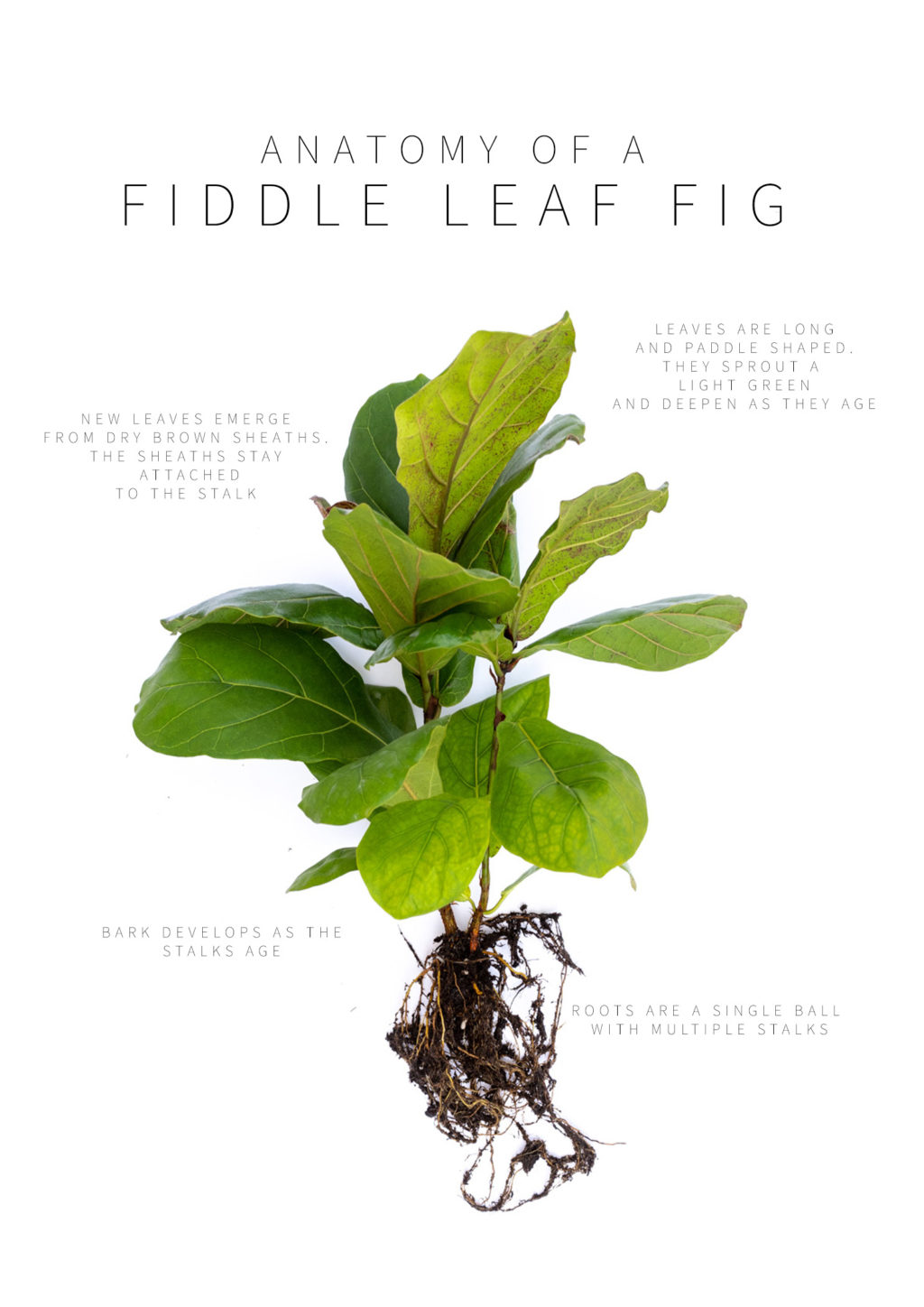
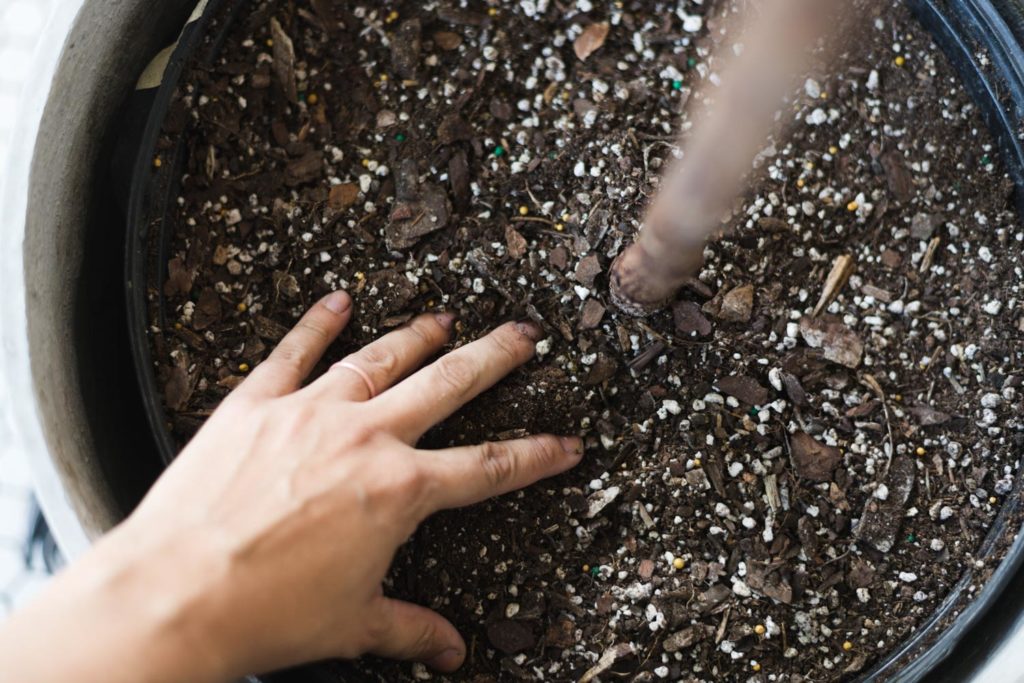
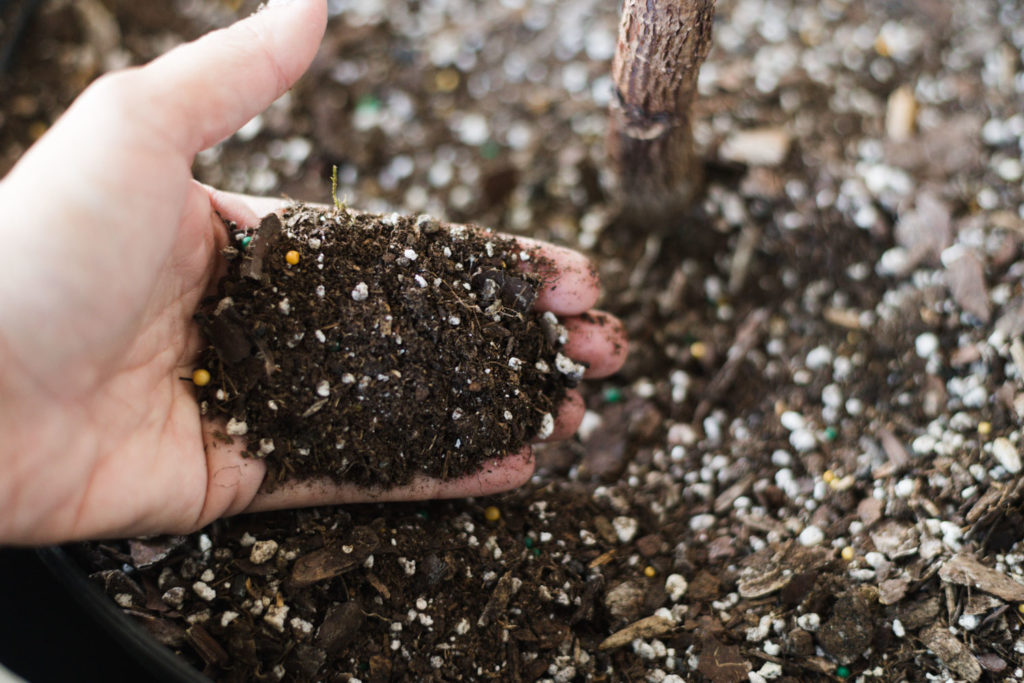
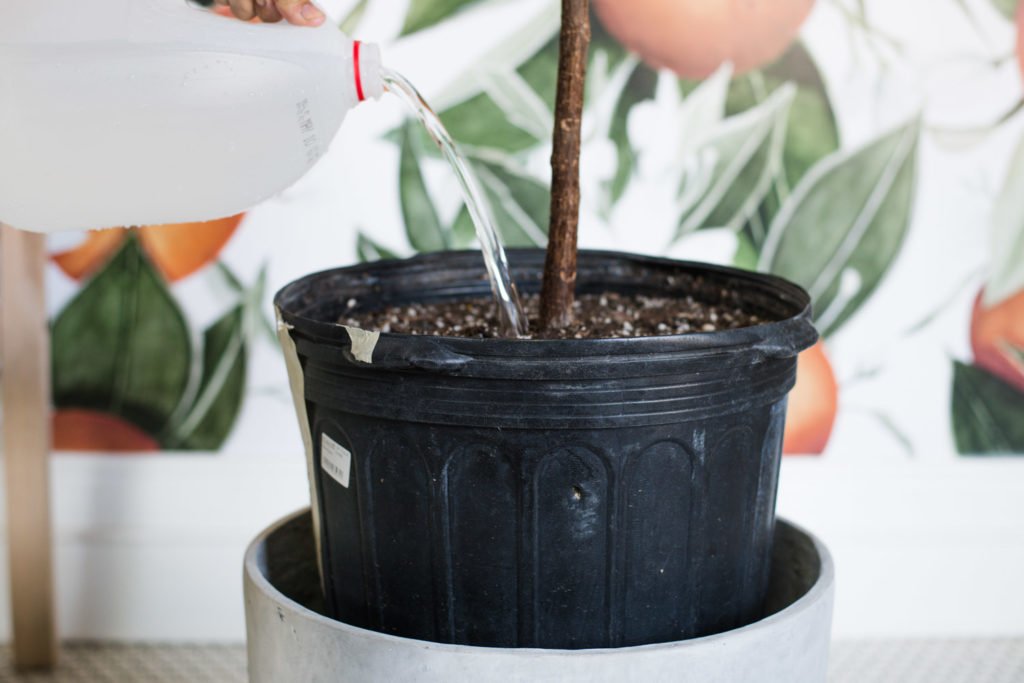
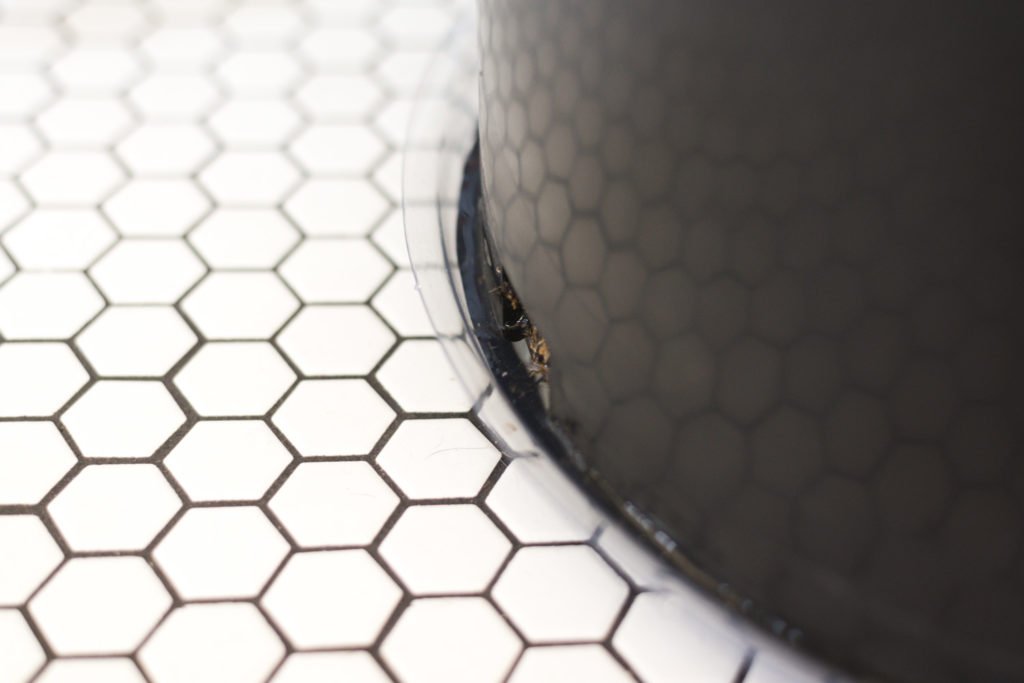
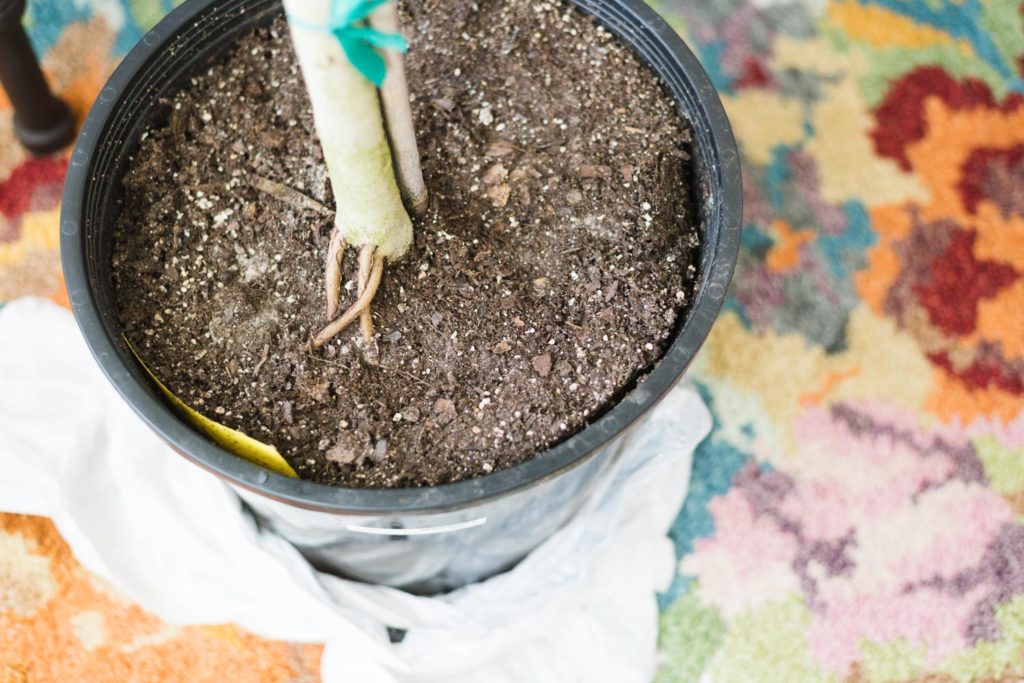
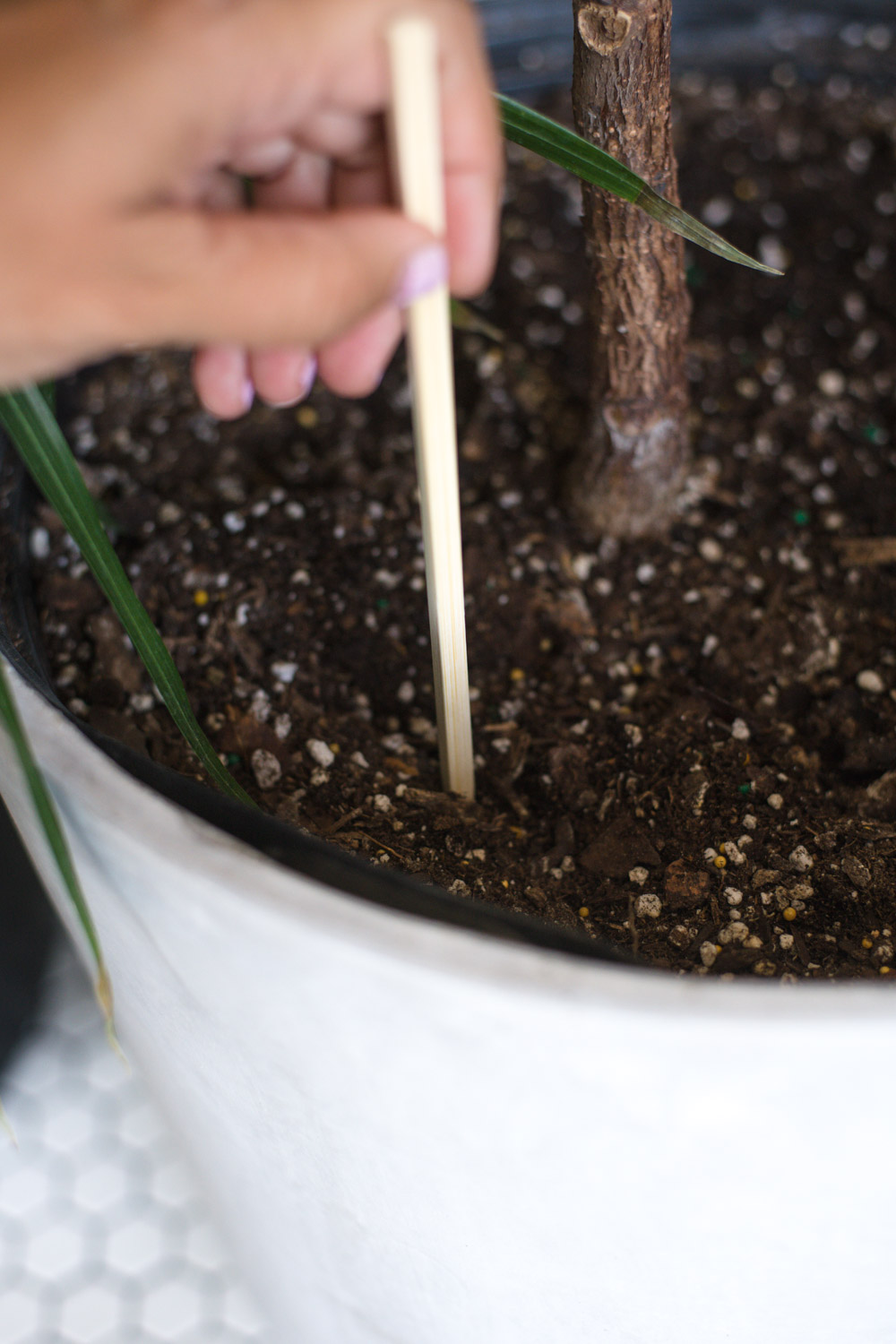
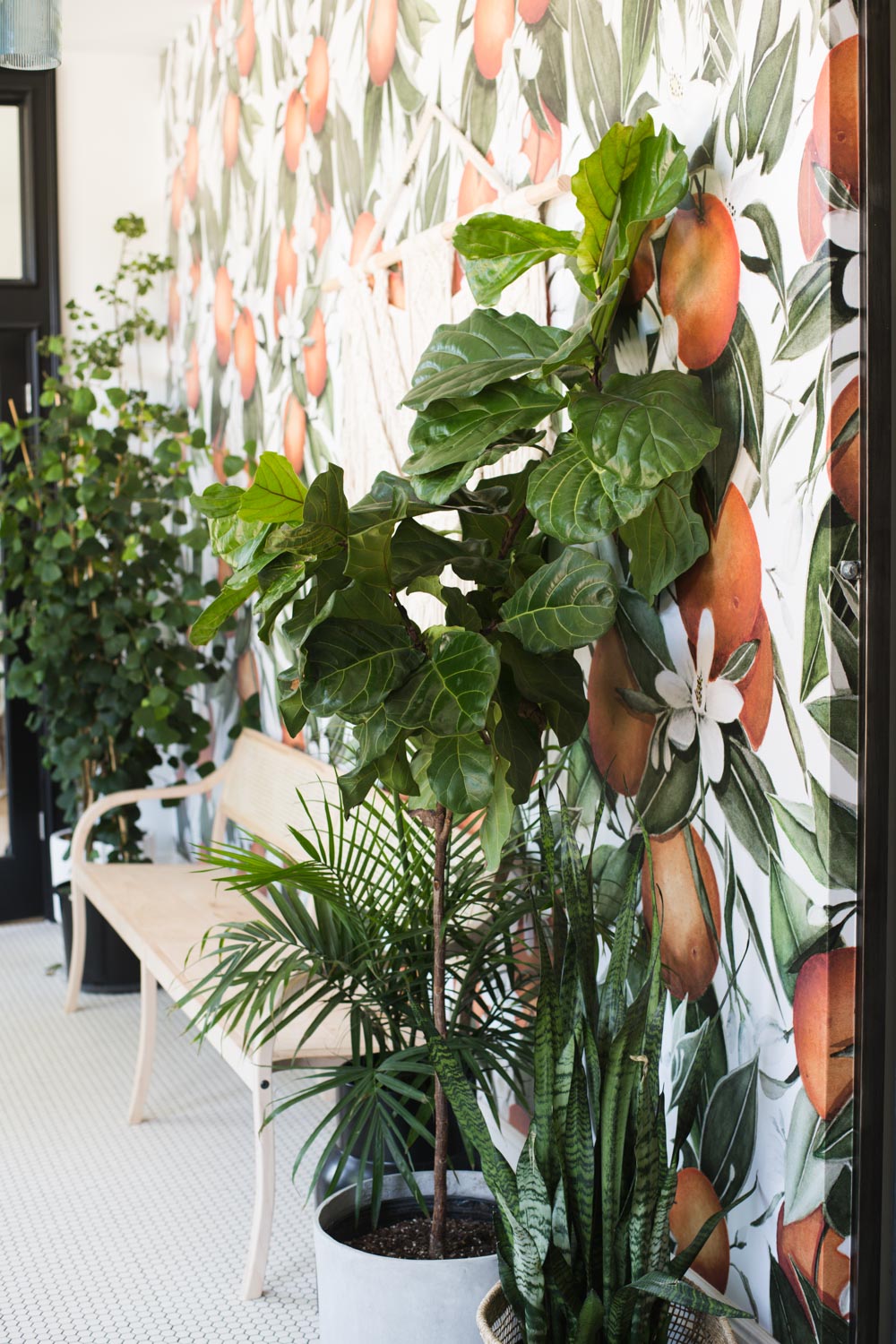
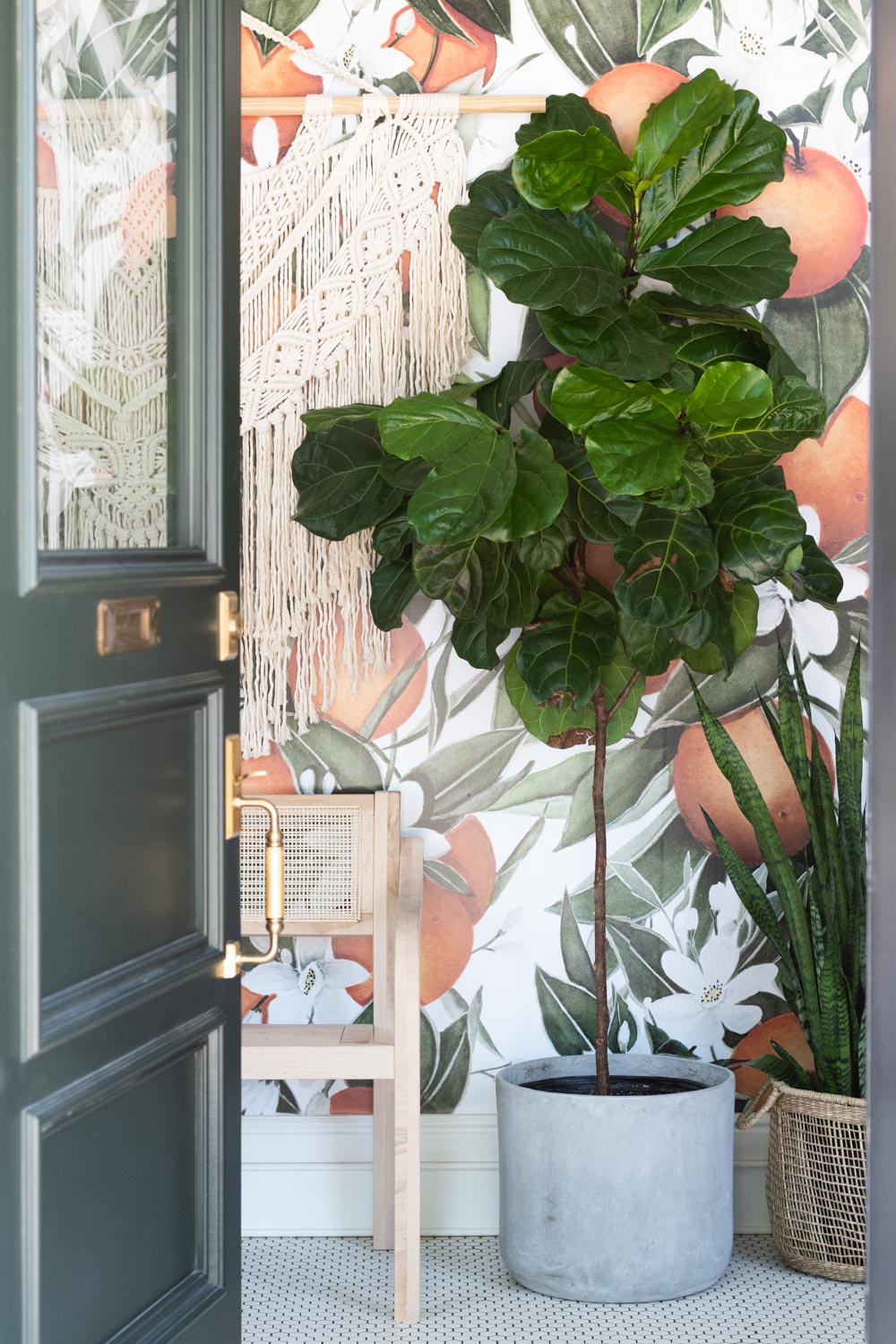
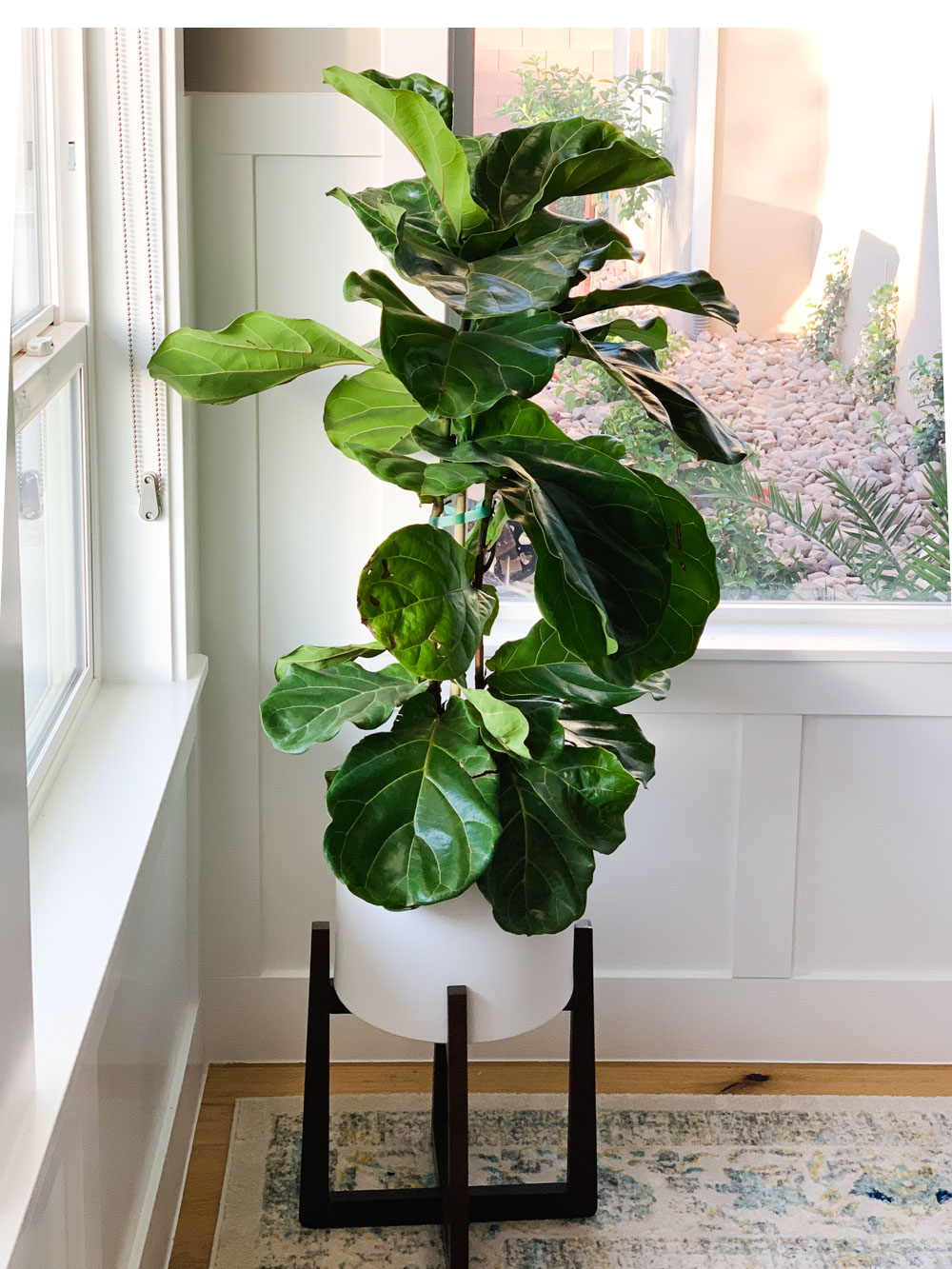
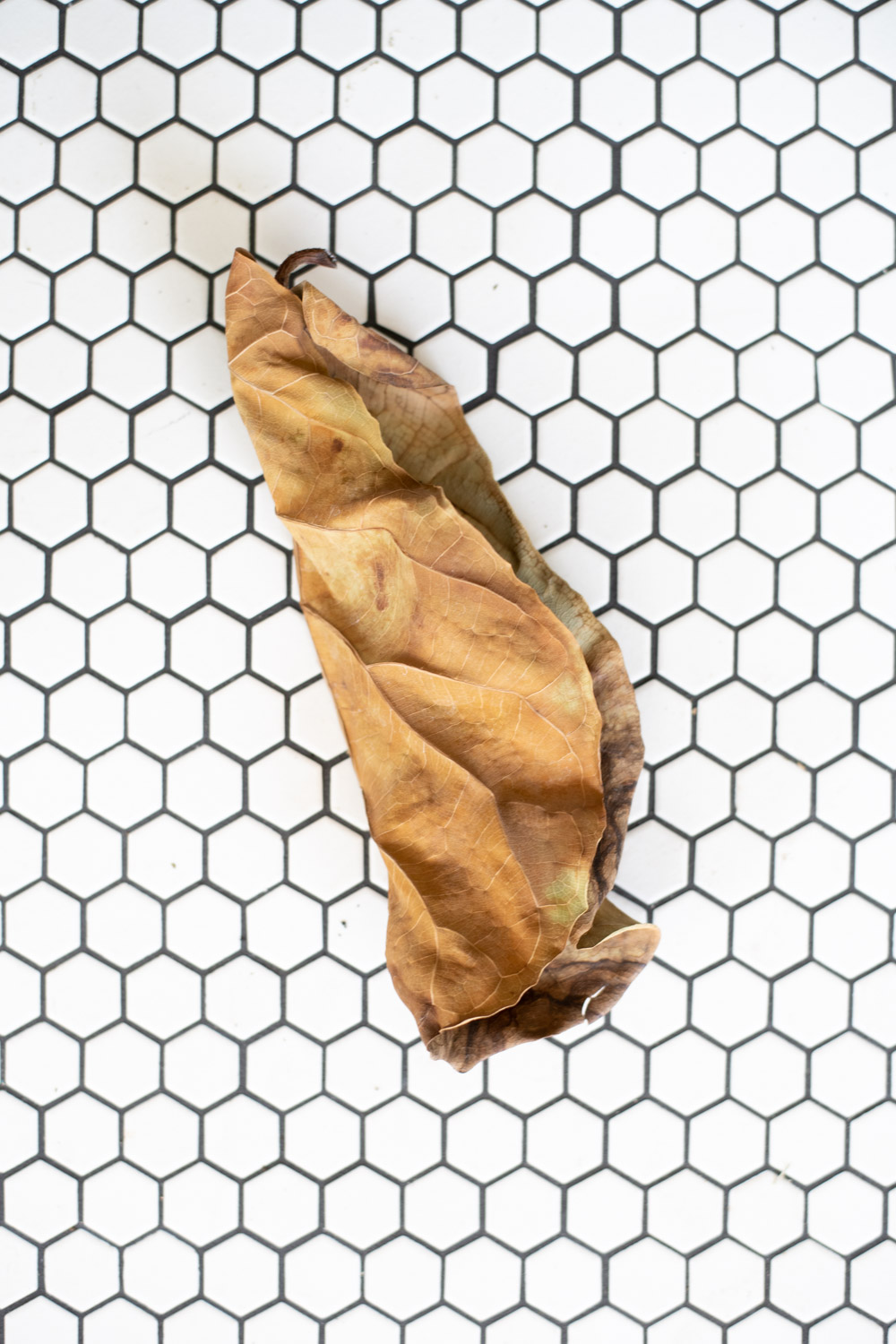
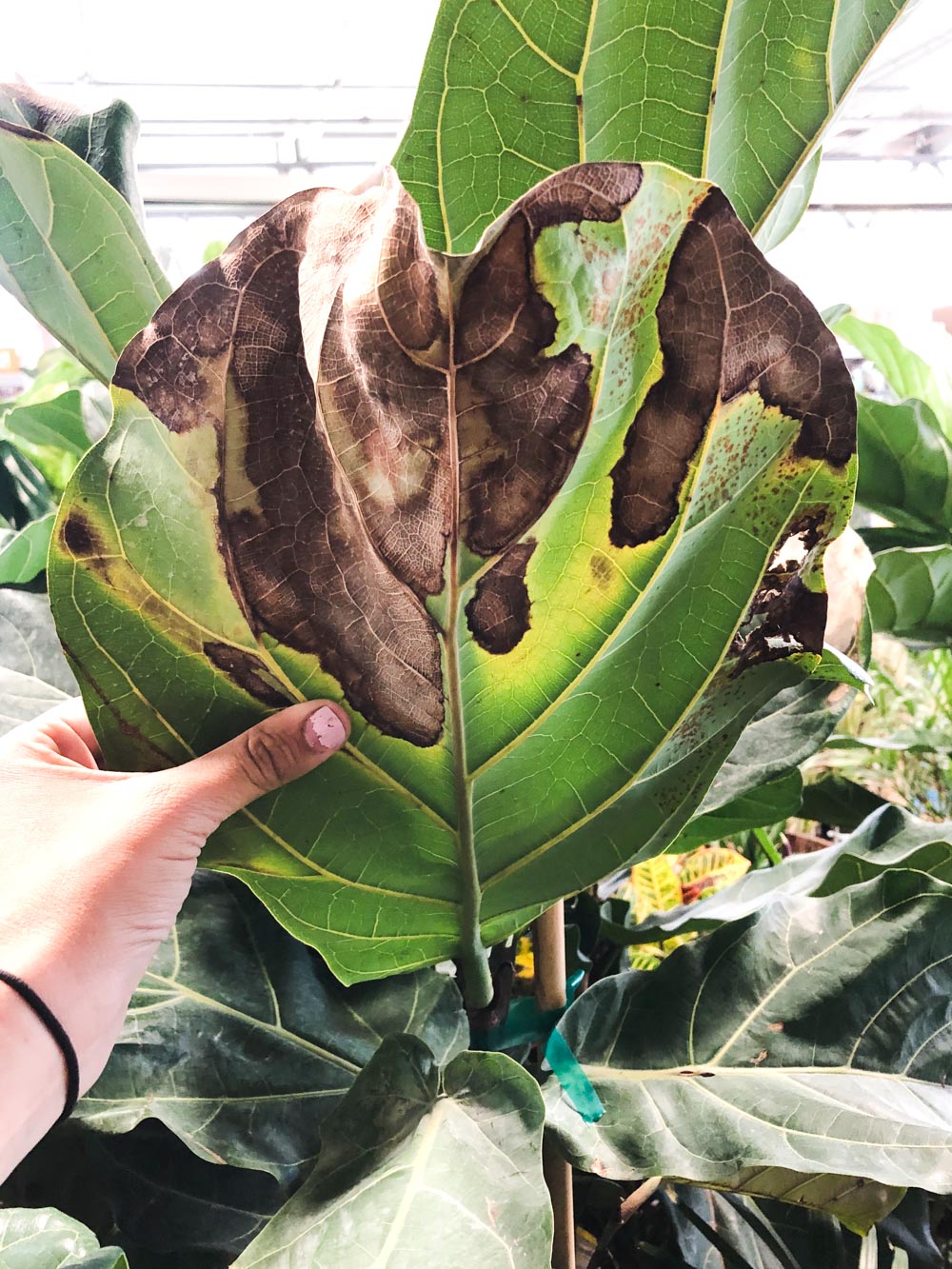
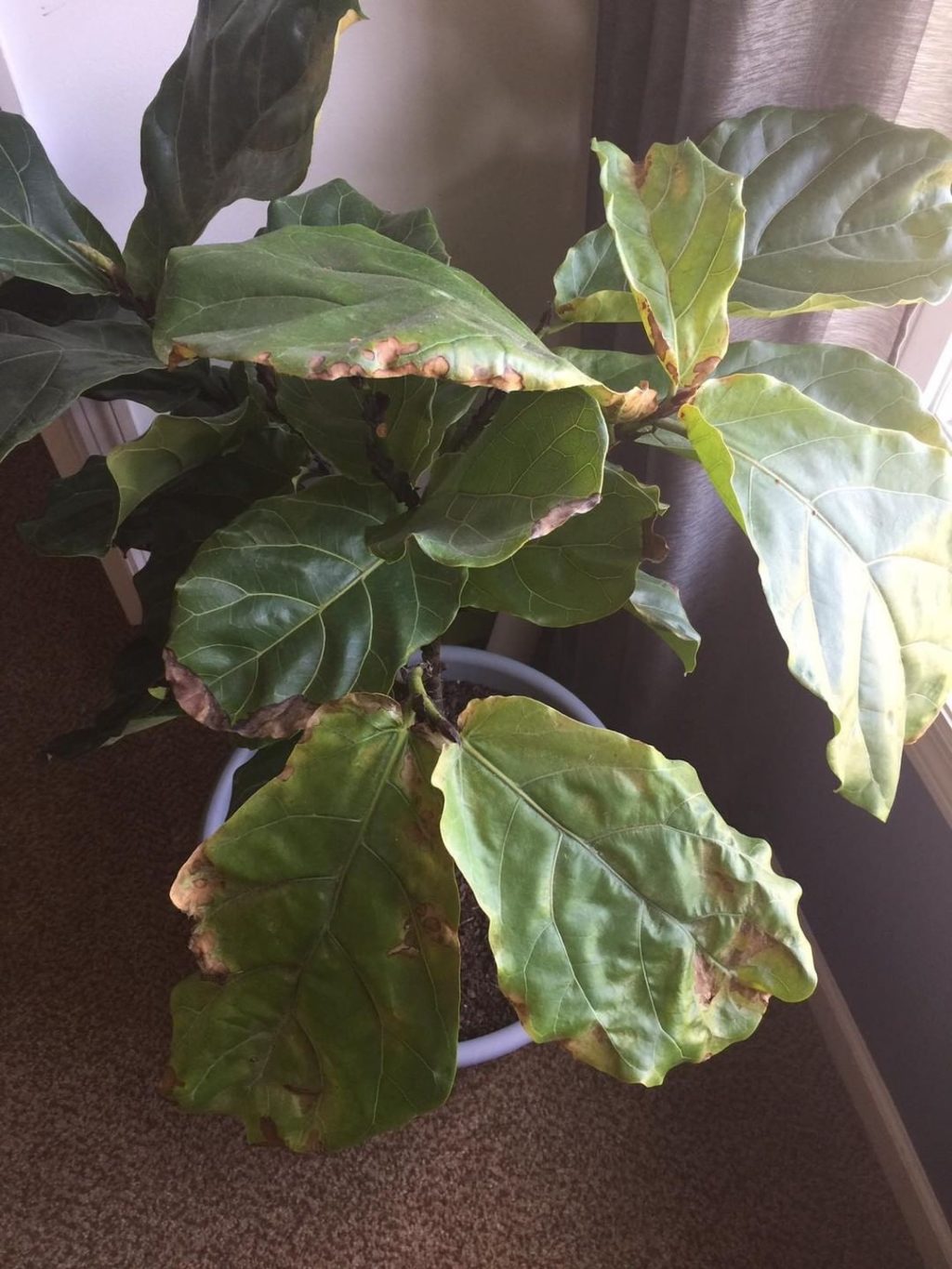
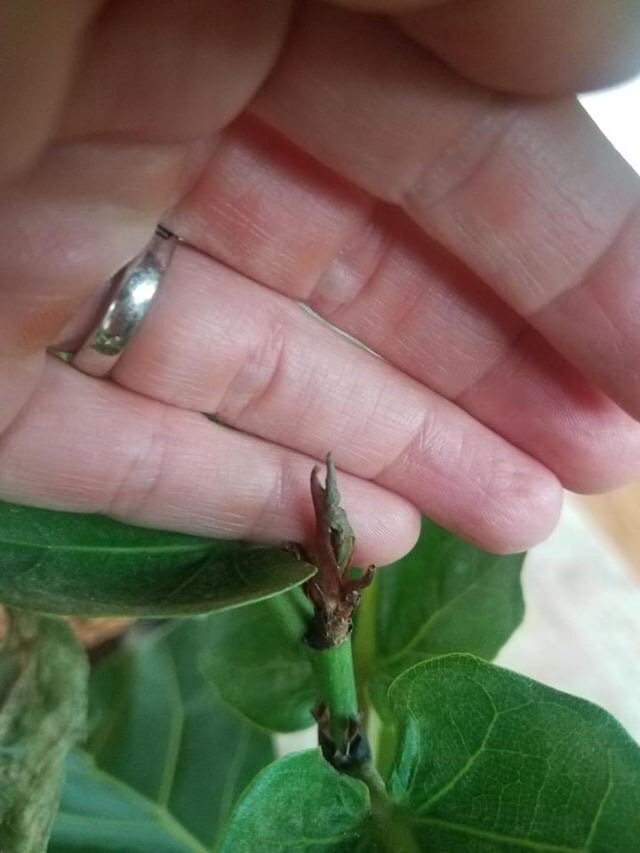
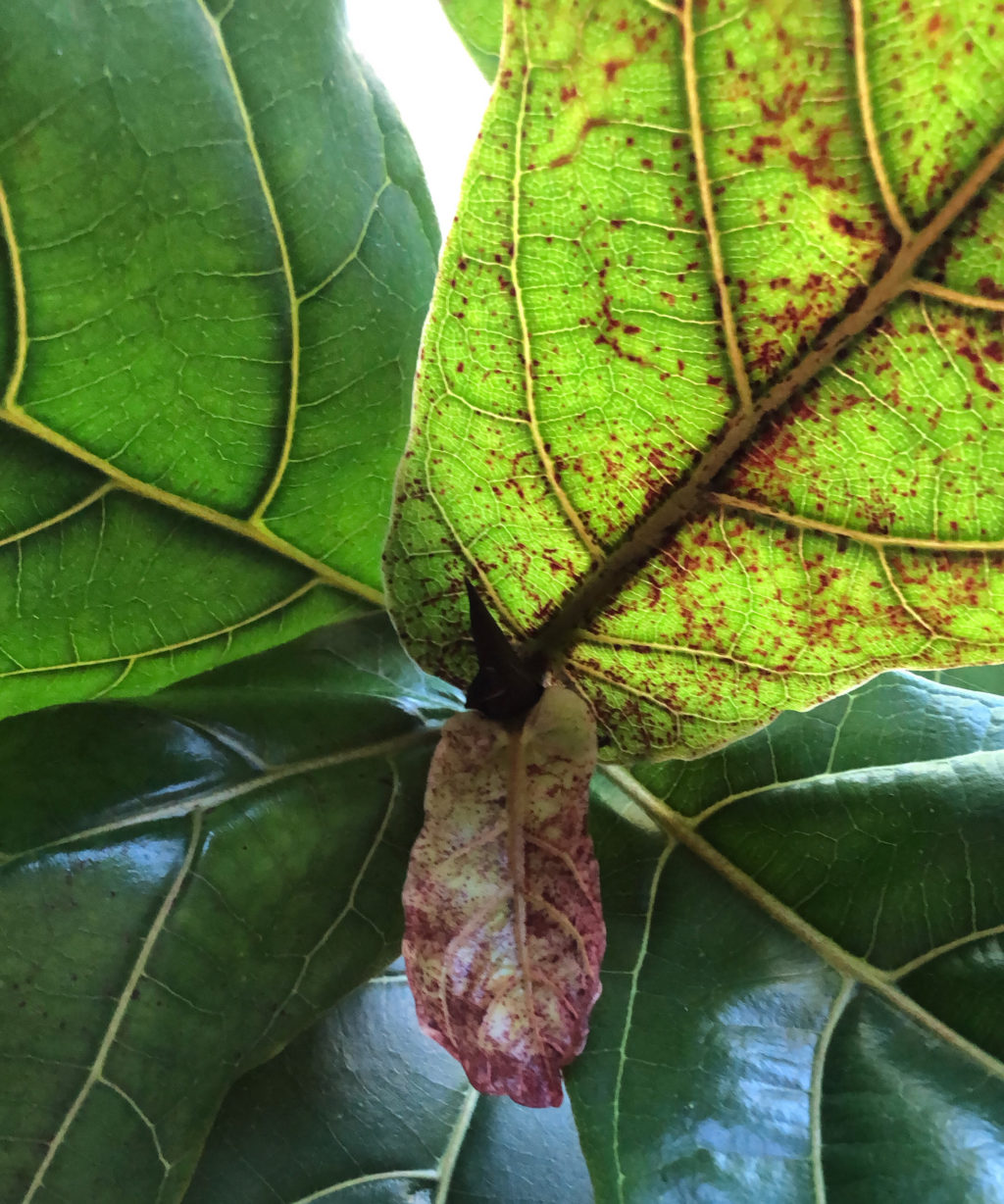
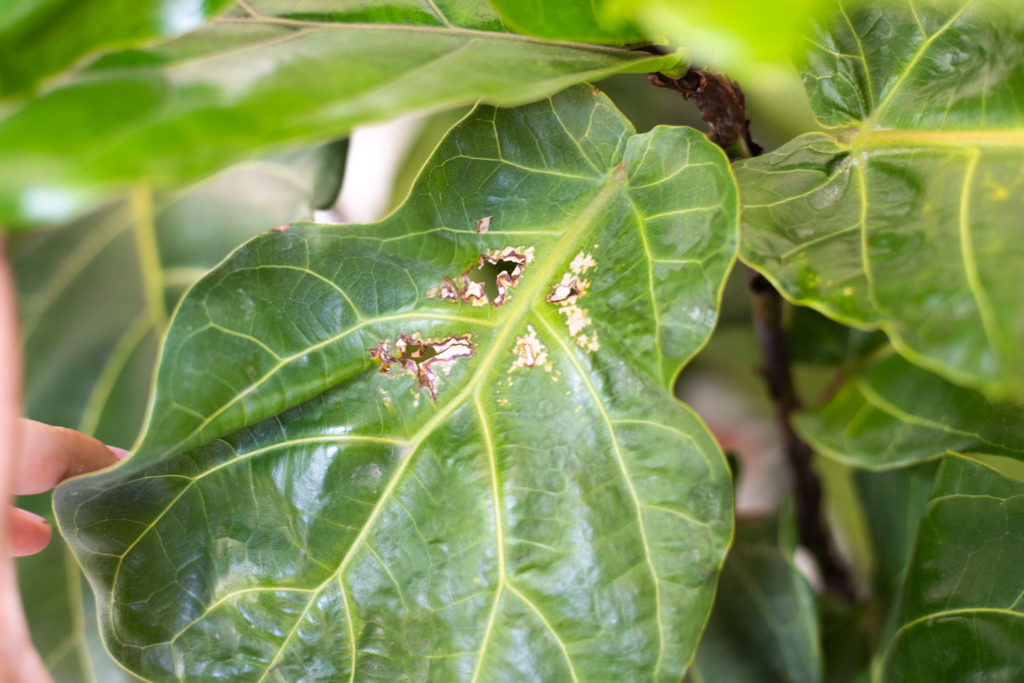
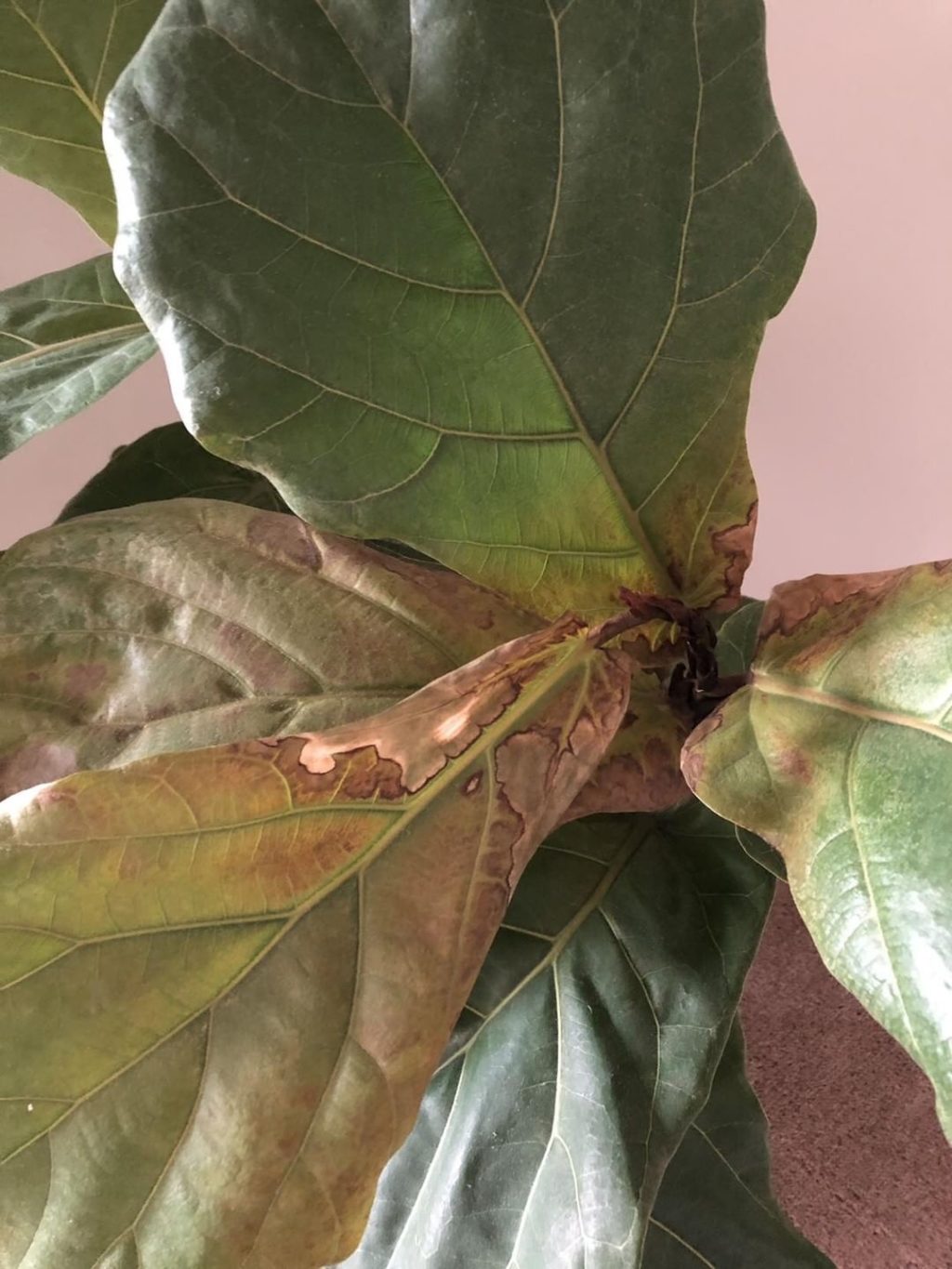
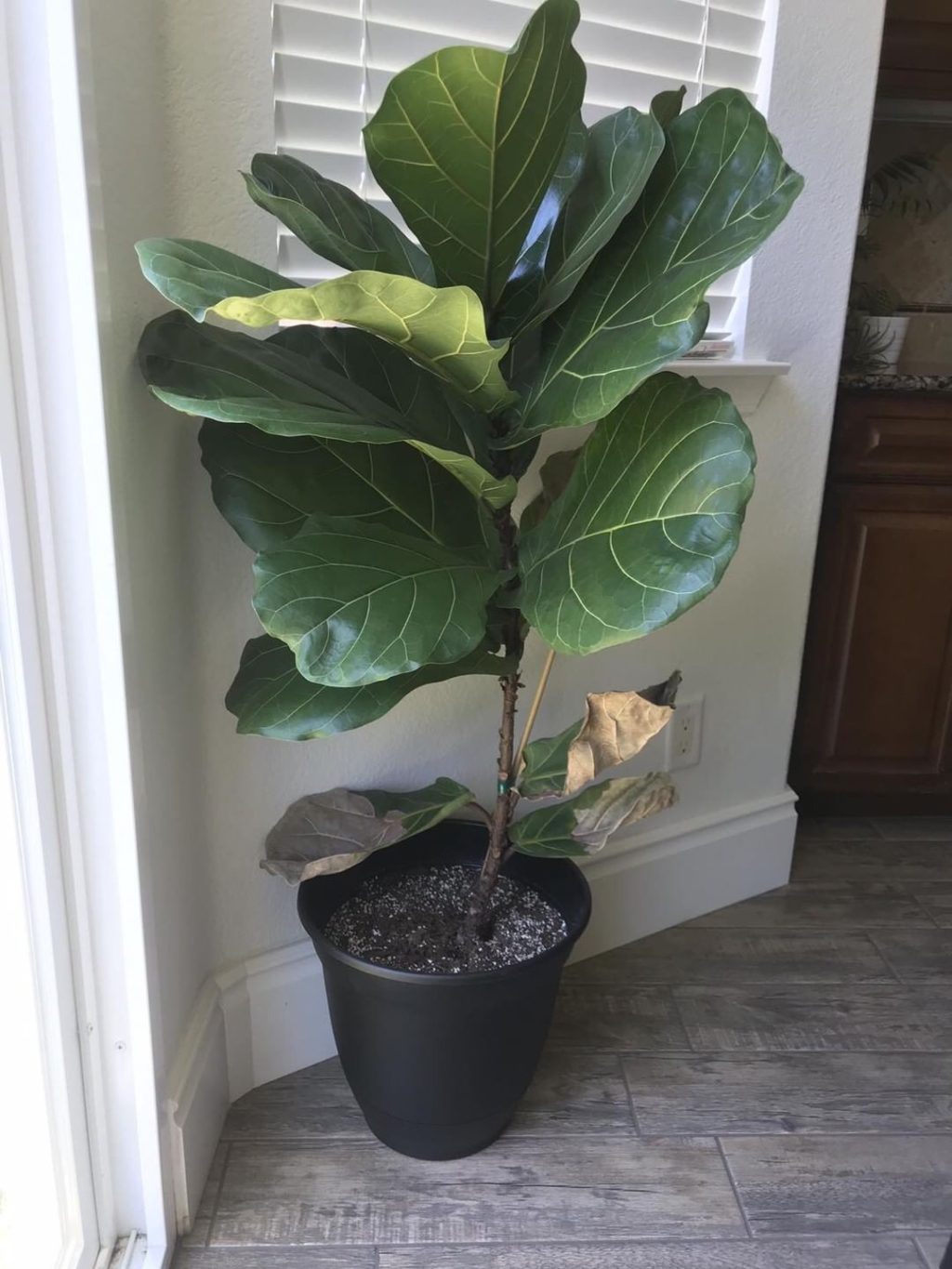
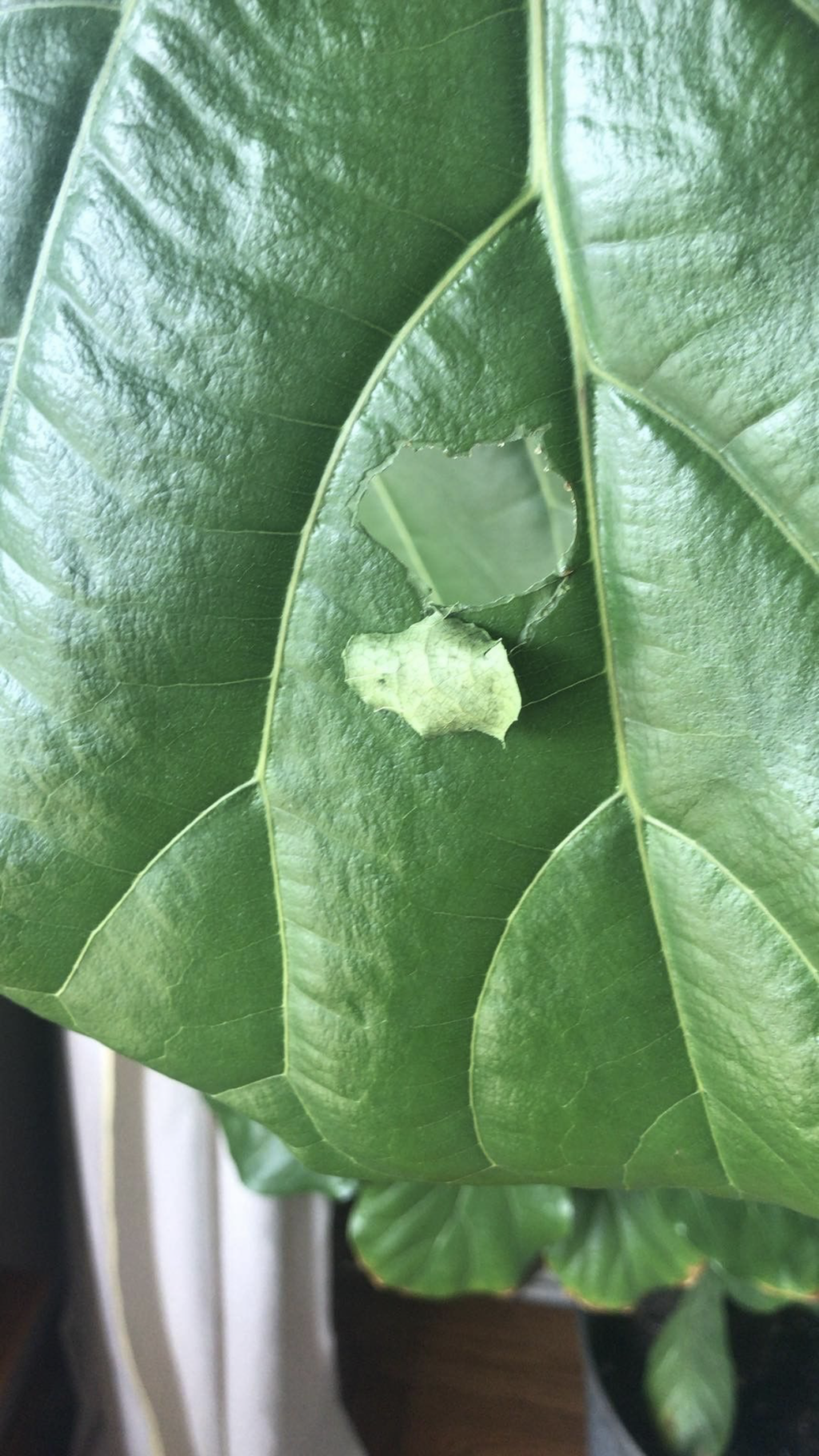

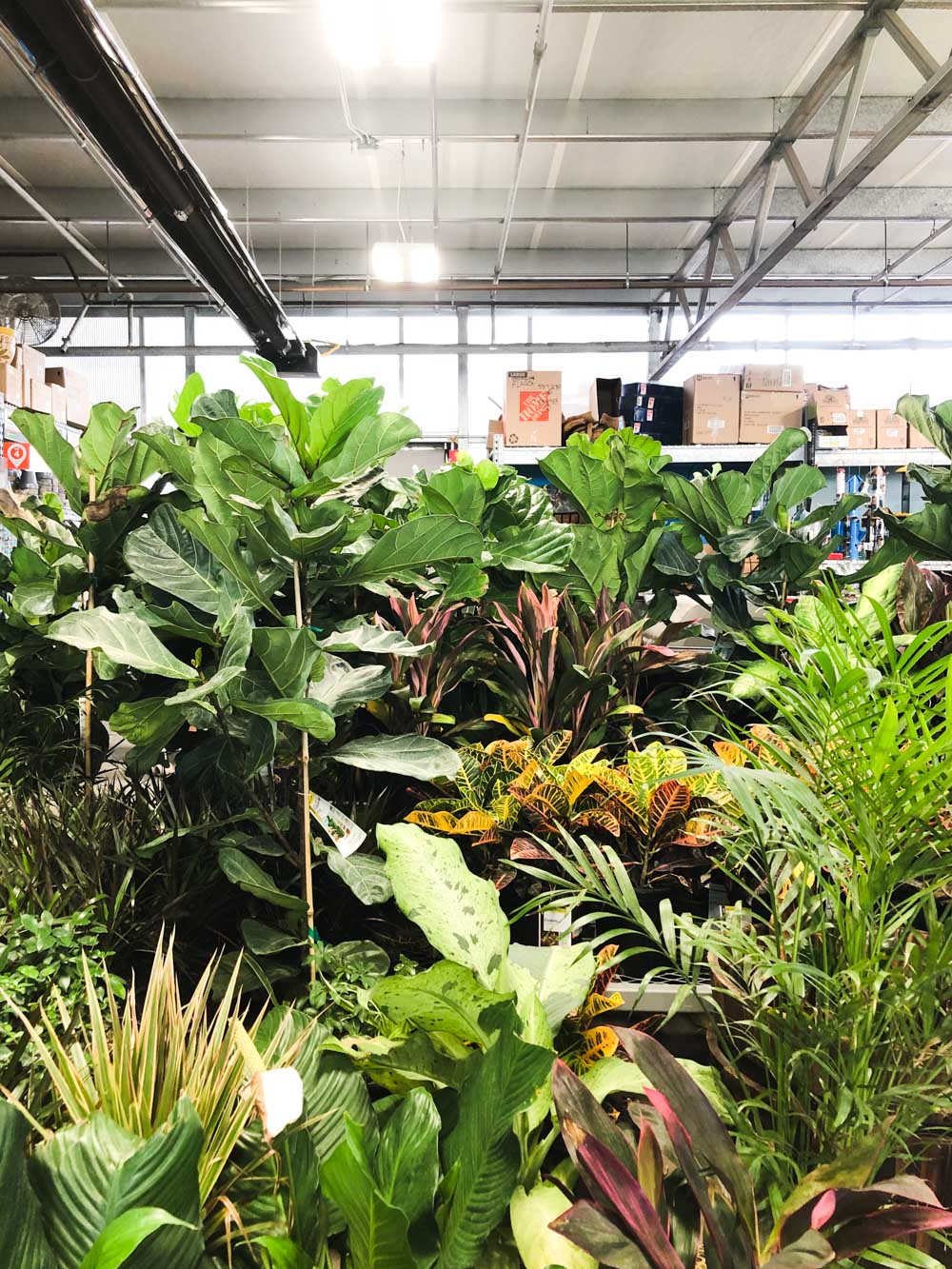
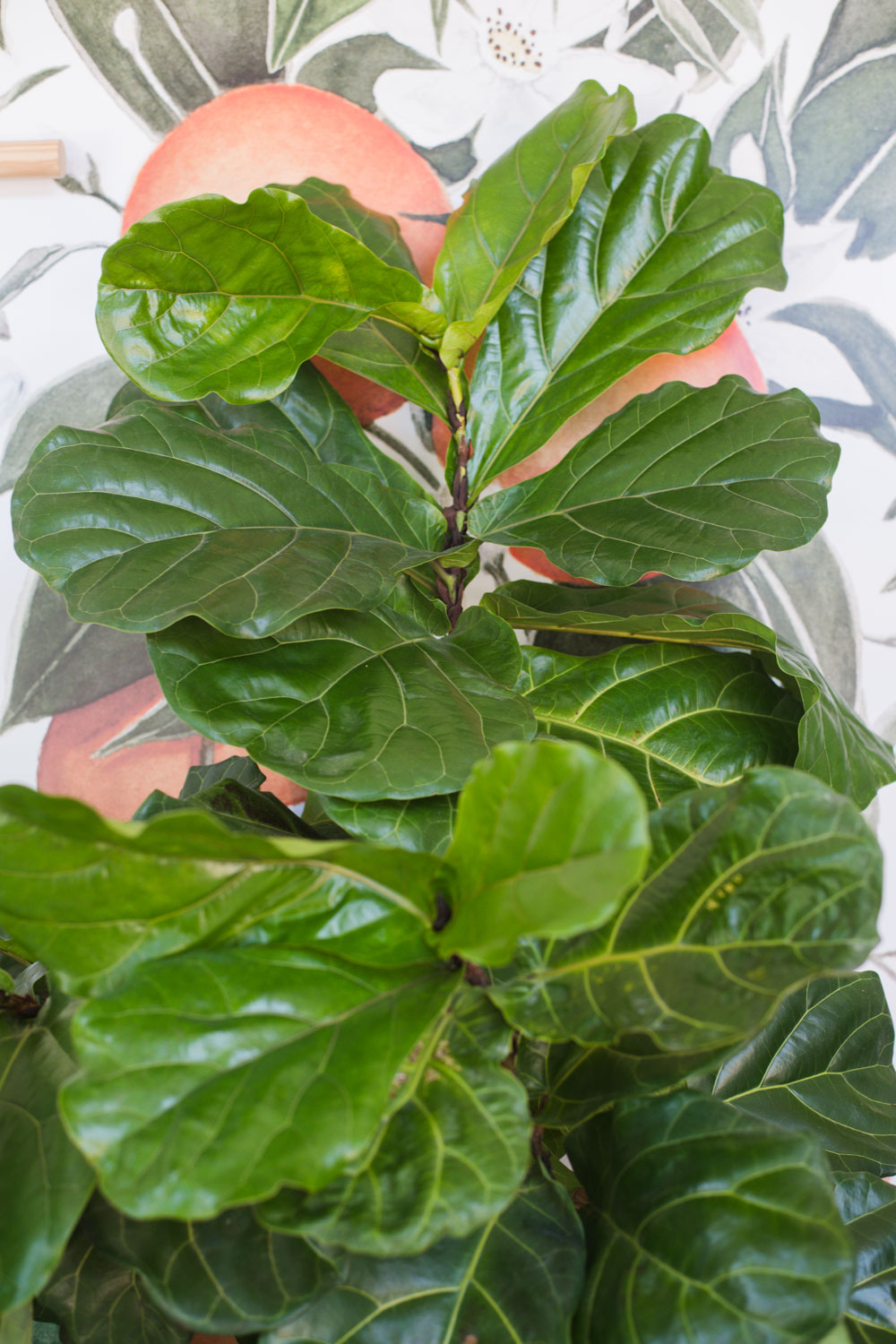
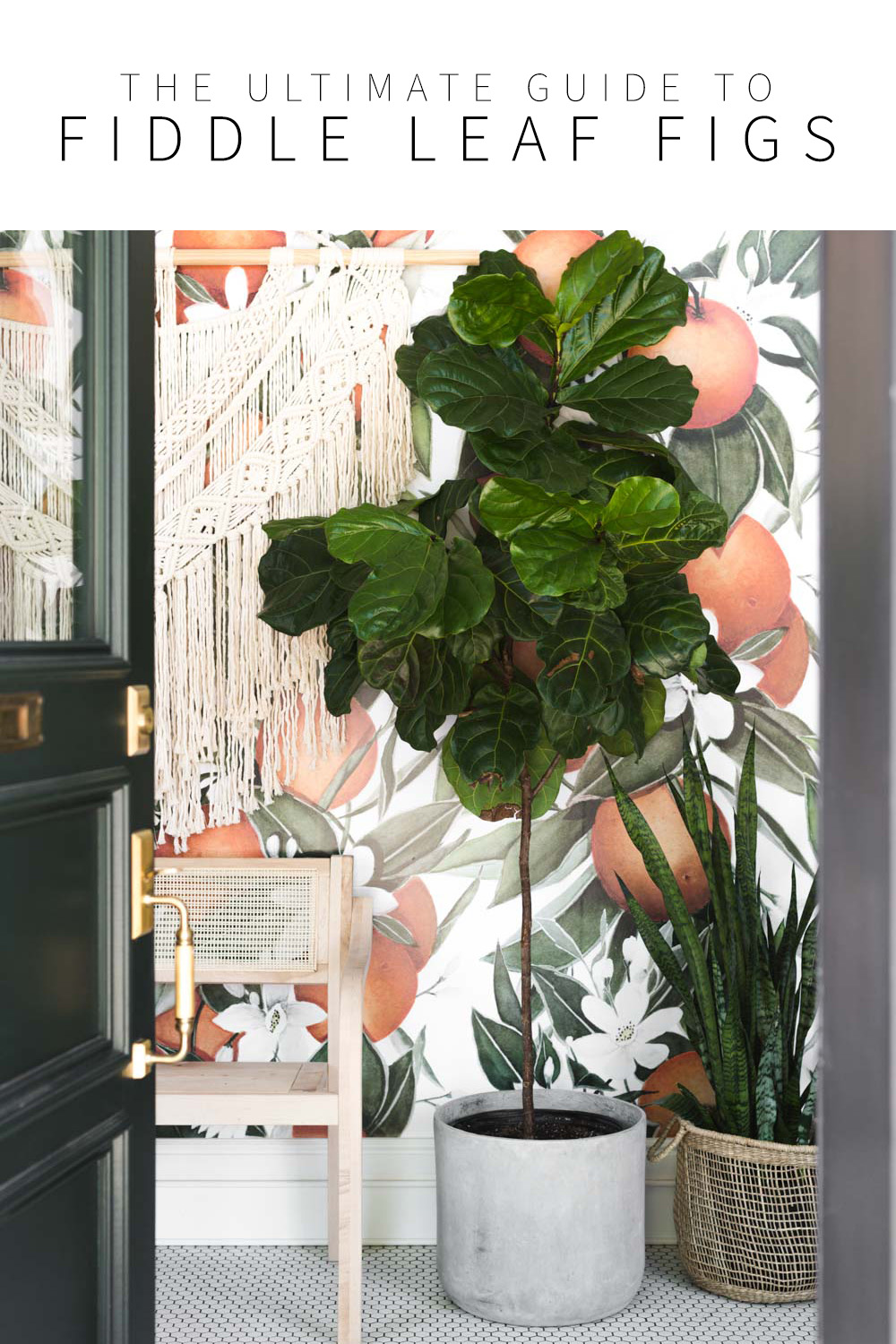
I think I might be ready to tackle owning one of these !
I just listened to an episode of Bloom and Grow Radio’s podcast all about fiddle leaf figs and one things she mentioned is they are native to west Africa and grow outside in intense sun, I’ve only got an east facing window it could go in, so I might try that! The picture/list of trouble shooting is really helpful, thank you!!!
Great guide, thank you! 2 years ago I rescued a FLF that stood next to a dumpster. I love her so much. Even bought a growing light for the dark season.
This is such a thorough guide! Thank you!!! My fiddle leaf was putting out new leaves, but hasn’t in the past month or so I don’t think. I’m going to try dusting the leaves. I wouldn’t have thought to clean them with baby wipes, but I have a 10 month old so I’ve got plenty of those around. I’ll give that a try!
What a great guide! These seem like quite a commitment, but I appreciate that you have all the tips, tricks, and what-ifs covered. I’m looking for a lush houseplant for the corner of my living room, but I still have a bunch of research to do. Thanks for this!
https://homebodyhall.com/
Hi!
I just bought my FLF, she’s new. I want to repot, because the it appears on the top that she is root bound, so I still stay away and not repot since she’s already stressed from moving?
I would just add more soil to the top of her pot and let her acclimate to your house before repotting!
I am loving this house plant series–thank you for such thorough and thoughtful guides!
I’ve been wanting one of these beauties for a while and you’ve given me a lot to think about as I try to find the right one and bring it home. Again, thank you!!
Hi! I just got my FLF and I noticed that a lot of them including the one I purchased had a ton of white “dust” residue on a lot of the leaves is that concerning? Thank you!!
Hi! I love your blog. I had a FLF and didn’t take very good care of it until I read this blog post. The main column lost all its leaves and hasn’t grown anymore, but I have a branch coming off of it that’s thriving. It’s looking a little crazy. Haha. Would you recommend cutting or notching it? Thanks!
Thank you so much for all of this great information! It’s really easy to follow and very well organized. I’ve been lusting after a FLF of my very own for quite some time, but I’ve just started the research as I don’t want any more plant blood on my hands. We are moving in about 7 months and this post has convinced me to just wait it out and adopt my fiddle-baby once we move. Pinned this article for then. Thanks again!
Love this and the pictures are so helpful! I received a fiddle that was dried up and 30% of the leaves fell off. That coupled with moving it twice, there are only 5-7 leaves, 3 of which were baby leaves and are now thriving. Since the leaves that fell off won’t grow back, is it worth keeping the fiddle with just the few leaves that are left?
I just love that orange botanical wallpaper! I’m sure you shared before but can you tell me where it’s from?